Nanomedicine: Germ killers
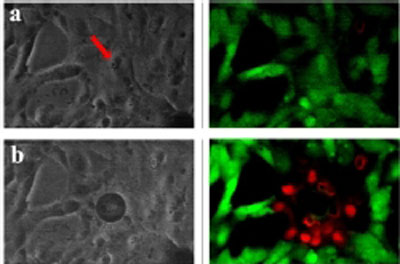 Polymer-based nanostructures that can selectively burst open bacteria show promise for tackling drug-resistant microbes.
Polymer-based nanostructures that can selectively burst open bacteria show promise for tackling drug-resistant microbes.
Nov 23rd, 2011
Read more
 Polymer-based nanostructures that can selectively burst open bacteria show promise for tackling drug-resistant microbes.
Polymer-based nanostructures that can selectively burst open bacteria show promise for tackling drug-resistant microbes.
Nov 23rd, 2011
Read more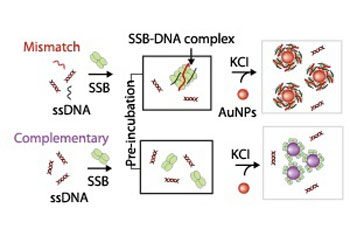 Researchers have developed a convenient method to characterize the interactions between single-stranded DNA and their binding proteins.
Researchers have developed a convenient method to characterize the interactions between single-stranded DNA and their binding proteins.
Nov 23rd, 2011
Read more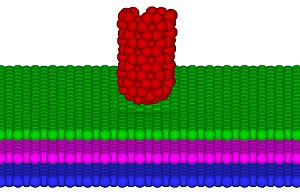 Short, capped single-walled carbon nanotubes may serve as ideal probing tips to study friction, lubrication and wear at the microscale.
Short, capped single-walled carbon nanotubes may serve as ideal probing tips to study friction, lubrication and wear at the microscale.
Nov 23rd, 2011
Read more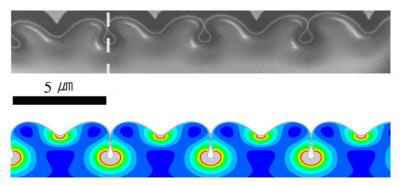 In a series of observations and experiments, engineers at Brown University and in Korea have discovered unusual properties in wrinkles and folds at the nanoscale. The researchers report that wrinkles created on super-thin films have hidden long waves that lengthen even when the film is compressed. The team also discovered that when folds are formed in such films, closed nanochannels appear below the surface, like thousands of super-tiny pipes.
In a series of observations and experiments, engineers at Brown University and in Korea have discovered unusual properties in wrinkles and folds at the nanoscale. The researchers report that wrinkles created on super-thin films have hidden long waves that lengthen even when the film is compressed. The team also discovered that when folds are formed in such films, closed nanochannels appear below the surface, like thousands of super-tiny pipes.
Nov 23rd, 2011
Read more Berkeley Lab researchers find simpler approach to making plasmonic materials.
Berkeley Lab researchers find simpler approach to making plasmonic materials.
Nov 22nd, 2011
Read more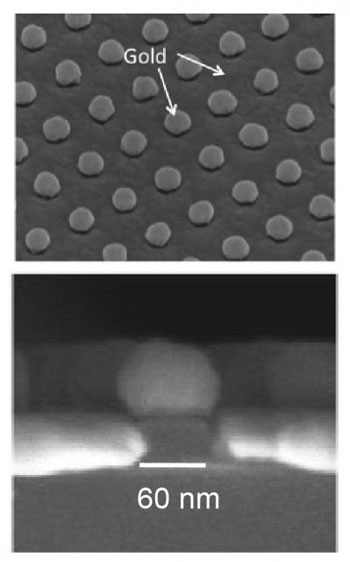 Conventional wisdom would say that blocking a hole would prevent light from going through it, but Princeton University engineers have discovered the opposite to be true. A research team has found that placing a metal cap over a small hole in a metal film does not stop the light at all, but rather enhances its transmission.
Conventional wisdom would say that blocking a hole would prevent light from going through it, but Princeton University engineers have discovered the opposite to be true. A research team has found that placing a metal cap over a small hole in a metal film does not stop the light at all, but rather enhances its transmission.
Nov 22nd, 2011
Read moreElectronics could be 100 times less energy-hungry thanks to a quantum phenomenon known as the tunnel effect - by 2017 in consumer electronics.
Nov 22nd, 2011
Read moreA magnetic force microscope (MFM) can determine the distribution of stray fields at a level of tens of nanometers near the surface of magnetic films, and therefore is an effective tool for observing the domain structures in magnetic grains of submicrometer size.
Nov 22nd, 2011
Read more Professor Kaustav Banerjee, a professor of electrical and computer engineering and Director of the Nanoelectronics Research Lab at the University of California, Santa Barbara, has been named winner of the 2011 international research award by the Electrostatic Discharge Association (ESDA).
Professor Kaustav Banerjee, a professor of electrical and computer engineering and Director of the Nanoelectronics Research Lab at the University of California, Santa Barbara, has been named winner of the 2011 international research award by the Electrostatic Discharge Association (ESDA).
Nov 22nd, 2011
Read more When a skier rushes down a ski slope or a skater glides across an ice rink, a very thin melted layer of liquid water forms on the surface of the ice crystals, which allows for a smooth glide instead of a rough skid. In a recent experiment, scientists have discovered that the interface between the surface and bulk electronic structures of certain crystalline materials can act in much the same way.
When a skier rushes down a ski slope or a skater glides across an ice rink, a very thin melted layer of liquid water forms on the surface of the ice crystals, which allows for a smooth glide instead of a rough skid. In a recent experiment, scientists have discovered that the interface between the surface and bulk electronic structures of certain crystalline materials can act in much the same way.
Nov 22nd, 2011
Read more A research group at the NIMS International Center for Materials Nanoarchitectonics (MANA) proved that the electrical resistance of a metal single atomic layer on a silicon surface becomes zero by superconductivity.
A research group at the NIMS International Center for Materials Nanoarchitectonics (MANA) proved that the electrical resistance of a metal single atomic layer on a silicon surface becomes zero by superconductivity.
Nov 22nd, 2011
Read more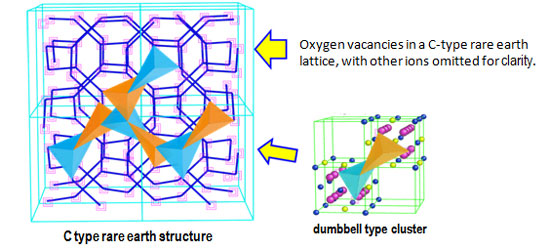 New research has clarified for the first time the cluster structure which has an extremely large effect on the long-term stability of solid oxide fuel cells (SOFC) for independent distributed power generation.
New research has clarified for the first time the cluster structure which has an extremely large effect on the long-term stability of solid oxide fuel cells (SOFC) for independent distributed power generation.
Nov 22nd, 2011
Read moreThrough the U.S. Department of Defense's Small Business Innovation Research (SBIR) program, DARPA is currently soliciting research proposals to develop a platform capable of rapidly synthesizing therapeutic nanoparticles targeted against evolving and engineered pathogens.
Nov 22nd, 2011
Read moreA recent review takes a look at advances in device architecture and materials science.
Nov 22nd, 2011
Read moreConstruction recently wrapped up for a second research facility at Gateway University Research Park's South Campus (Gateway) with completion of a 105,000-square-foot building that will house the Joint School of Nanoscience and Nanoengineering (JSNN).
Nov 22nd, 2011
Read more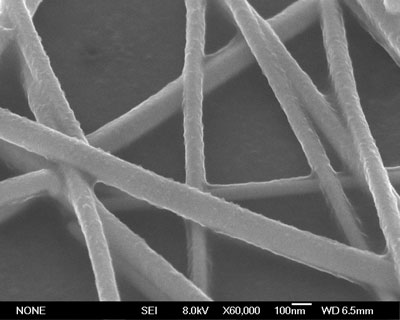 Researchers at UCLA report that they have developed a unique method for producing transparent electrodes that uses silver nanowires in combination with other nanomaterials. The new electrodes are flexible and highly conductive and overcome the limitations associated with ITO.
Researchers at UCLA report that they have developed a unique method for producing transparent electrodes that uses silver nanowires in combination with other nanomaterials. The new electrodes are flexible and highly conductive and overcome the limitations associated with ITO.
Nov 22nd, 2011
Read more